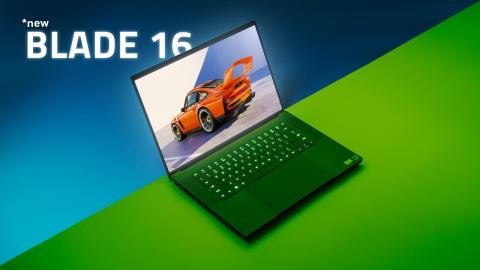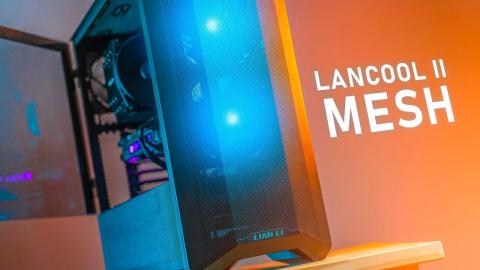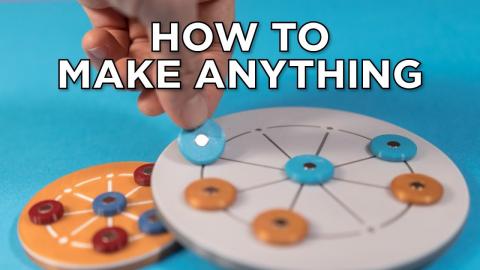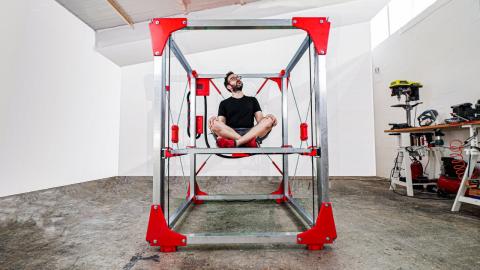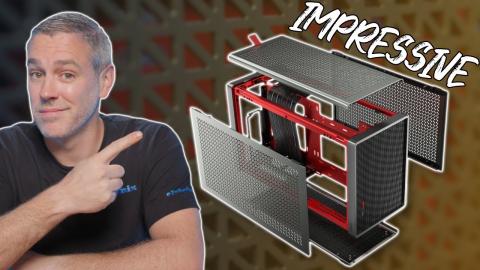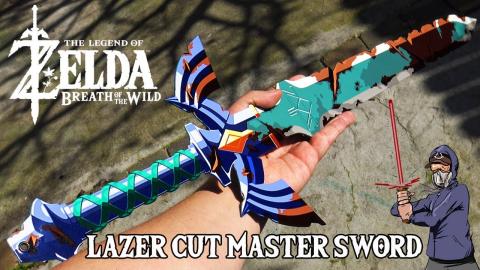How to Make a Giant Perfection Game
Description
I made a gigantic Perfection game with Matterhackers! This project is chocked full of woodworking, 3d printing, and CNC milling, and it was a whole lot of fun to make!
Subscribe to my channel: http://bit.ly/1k8msFr
Second Channel: http://bit.ly/iltms-2
MORE PROJECTS, POSTS AND EVENTS
http://www.iliketomakestuff.com
CHECK OUT MATTERHACKERS FOR EVERYTHING 3D PRINTING:
https://www.matterhackers.com
TOOLS & SUPPLIES (affiliate links):
https://kit.com/iliketomakestuff/my-woodworking-tools
https://kit.com/iliketomakestuff/shop-safety-gear
Twitch Stream Every Wednesday @ 3pm EST: www.twitch.tv/iliketomakestuff
I WROTE A BOOK!!
http://www.iliketomakestuff.com/makingtime
Want to support ILTMS? Get exclusive content and more...
http://www.iliketomakestuff.com/patreon
BUY A SHIRT, STICKER, NOTEBOOK, DIGITAL PLANS and MORE!!
http://www.iliketomakestuff.com/store
FOLLOW:
http://twitter.com/iliketomakestuf
http://www.twitch.tv/iliketomakestuff
http://instagram.com/iliketomakestuff
http://facebook.com/iltms
MUSIC: http://share.epidemicsound.com/iltms
Because we were going to be blowing this table-top game up to fit on a wall, we needed to model the original game board and scale everything to a known dimension. The easiest size to base the game of off was a sheet of plywood. We knew that the Matterhackers' ceilings were 9-feet tall, so using the 8-foot long sheet of material was a perfect plan. Josh modeled the game in Fusion 360 ensuring that everything was scaled so that the game would be as long as a standard sheet of plywood.
Because the game board itself was a relatively simple box, the real trick was to create the depth and layering between the side panels, the pockets for the game pieces, and the trim that would give the game dimension. Most of these pieces would be ripped from either 3/4" plywood or 1/2" MDF. All-in-all, the whole game was constructed from 4 sheets of 4'x8' material.
With a final model in hand, Josh was able to share the design with Alec at Matterhackers who then used a plug-in for Fusion 360 to make .svg files of the game board faces. This saved a lot of redundant modeling time because the game piece pockets could be cut on the X-Carve using the model's existing designs. There were 25 pockets that needed to be cut into 12"x12" tiles using the CNC.
To make the actual game pieces to fit into those tiles, Alec used the Taz 6 3d printer with a MOARstruder to print all of the 25 unique geometric shapes. These huge pieces were printed in flexible material so that no one would get hurt when the pieces popped out of the game board if someone didn't win. Almost all of these printed and milled components were completed before we arrived so that we could focus on the game board while the robots worked in the background.
When Josh & I arrived at Matterhackers, they had space in a warehouse set up for us to work in. We had already given them a list of materials and tools necessary to build this massive game, so after a quick tour, we got right to work. Using a cut list Josh derived from the model, I used a circular saw and a contractor table saw to break down the large sheet goods. The first day was spent cutting long pieces and painting them the right colors so they could dry overnight.
The next day, we assembled the board's major assemblies; the frame, the backer-board that would hold the CNC'd tiles, and the marquis. Almost all of these components were assembled using pocket hole screws and glue. The major assemblies were brought together and the game stood upright on its own. It was as impressive as it was massive.
In the original game, the plate with the game piece pockets was spring-loaded and held in tension while the timer ticked down. If the "Stop" button wasn't pressed in time, the spring-loaded plate was released and all of the pieces were shot upward making a huge mess of your work. We couldn't exactly replicate this action, but went through many design iterations. First we thought about individual servos that would push the pieces out, then stepper motors linked to axels with push arms, and maybe some huge springs like the OG game? We finally landed on a PVC pipe grid that would pivot at the top and would slap forward using tension from surgical tubing. The grid would be mounted behind the game face and would push the pieces out using small pegs that would protrude through small holes cut into the tiles.
To hold the push grid back while the game was playing, we decided to use an electronic door-latch solenoid. In theory, this was a perfect plan and the component was well suited for the job. In reality, however, the solenoid (even a more powerful one) could not overcome the tension placed on it, more on that later. To reset the grid, we tied a cord to the bottom of the assembly, through some pulleys, to the outside of the game board...
To read the full article, go to https://ilt.ms/giant-perfection-game


